All-or-nothing multiple choice
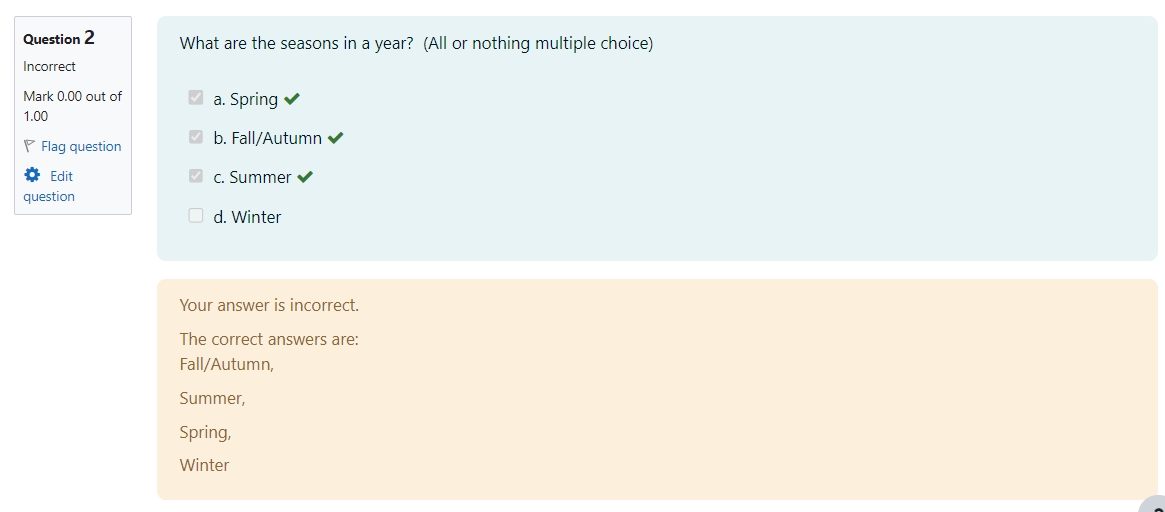
An example of All or Nothing Multiple Choice question type
Overview
All-or-nothing multiple choice question type allows students to choose multiple answers. But it differs from the Multiple choice grading method that partial correct answers will not be allowed .
What to know
All or nothing multiple choice question type will see the response as correct only when all and only the correct answers are selected. If you lost one correct answer or select one wrong option, you will get 0 for this question though you are partially correct. It's different from the multiple choice question type, where teachers can set different percentages of grades for each answer, and the partially correct answer will get some grades.
Table of Contents
- Step 1: Access the Quiz activity where you want to create the question
- Step 2: Questions editing page
- Step 3: Add a new question
- Step 4: Choose a question type
- Step 5: General settings
- Step 6: Answers settings
- Step 7: Combined feedback (Optional)
- Step 8: Multiple tries
- Step 9: Tags (Optional)
- Step 10: Save changes
Step 1: Access the Quiz activity where you want to create the question
In your module area/course, click the link of the Quiz activity where you want to create a new Multiple Choice question.

Note: If an appropriate Quiz activity doesn’t exist in your module area/course, please see Add a Quiz for details on creating one.
Step 2: Questions editing page
- Click the 'Questions' tab.

Step 3: Add a new question
- On the following page, click the ’Add’ link.
- Click the ’a new question’ link in the drop-down menu.
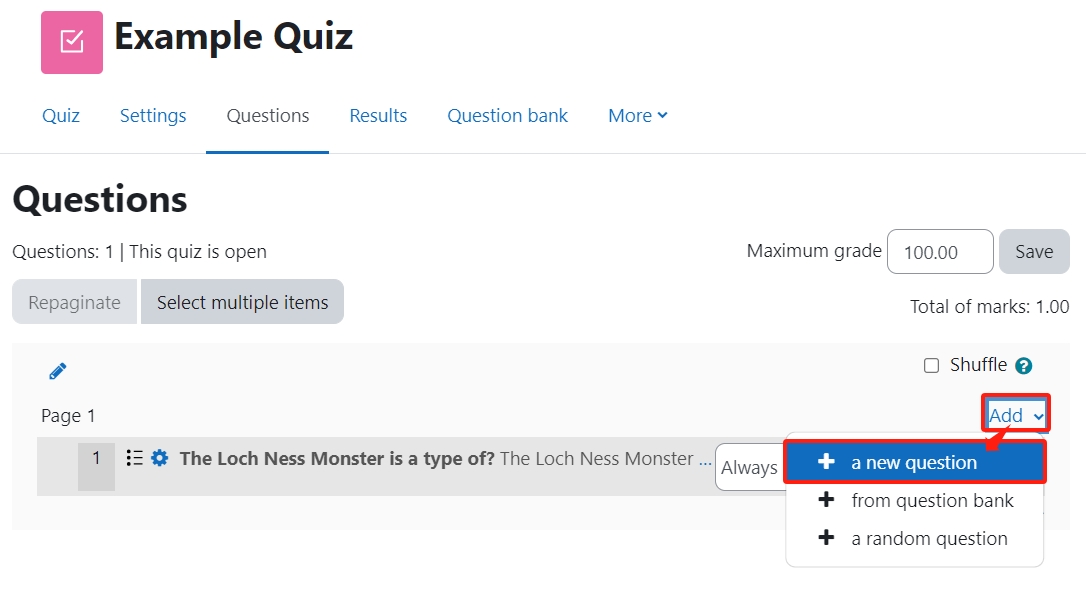
Step 4: Choose a question type
- Locate and select the Multiple choice question type from the pop-up window.
- Click the ’Add’ button.
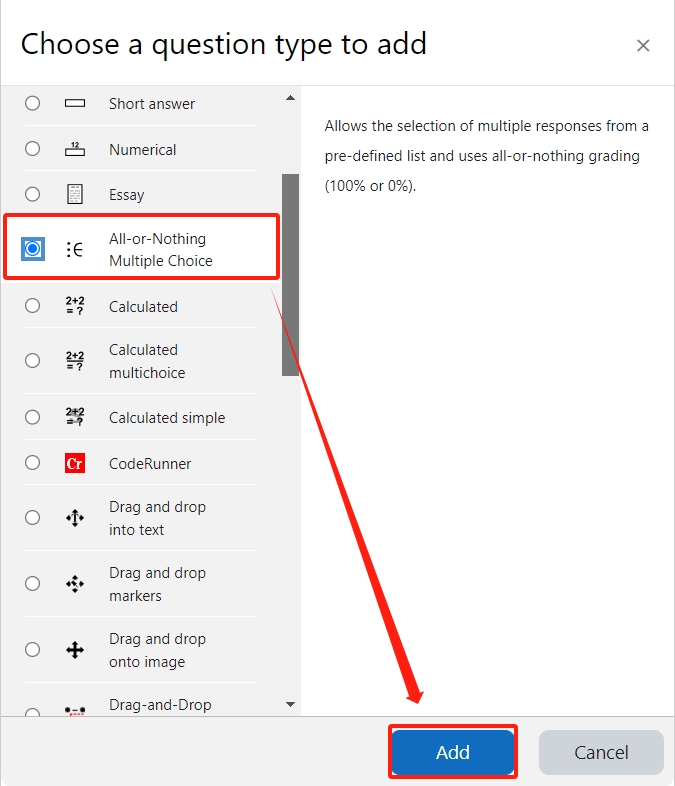
Step 5: General settings
Set the general information of the question by:
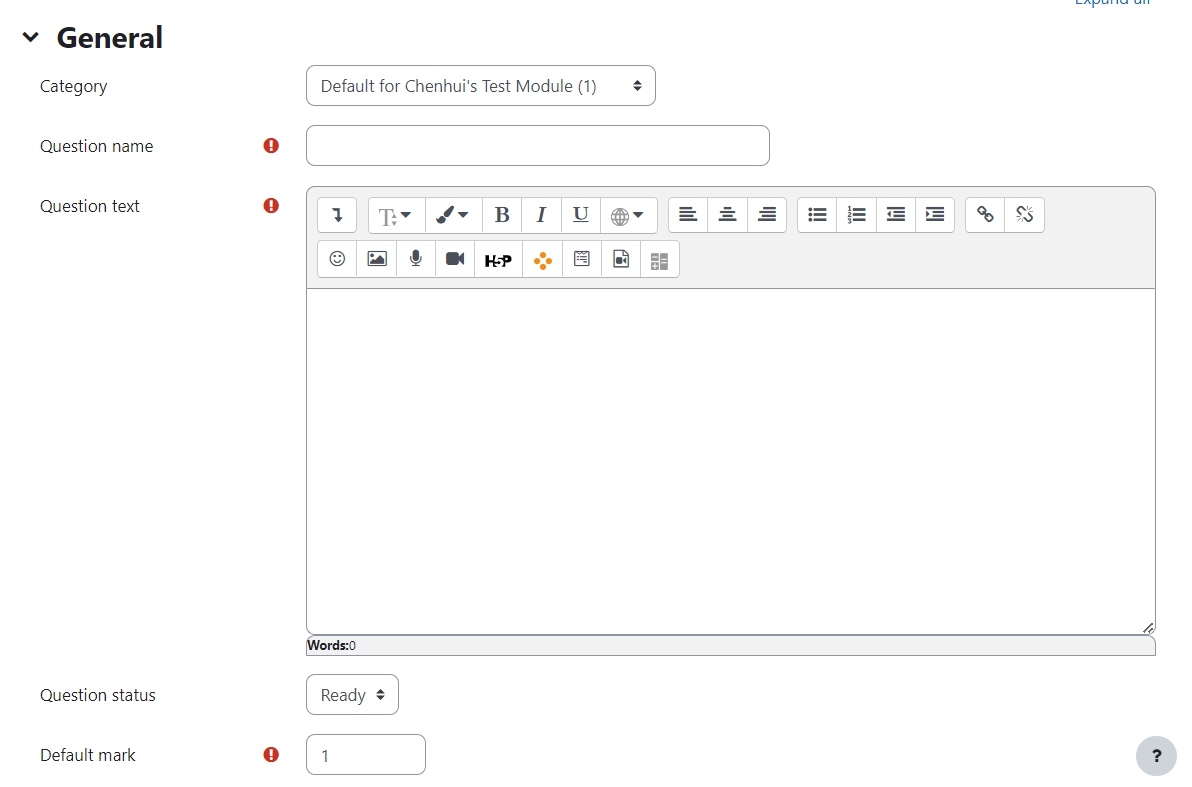
Category: Where you want the question to be saved.
Question name: It will be shown when you are searching the questions in question bank, but students can't see the question name.
Question text: It describes the question itself and students will see it when taking the quiz.
Default mark: Please set the default mark as 1. We can change the marks later when you are editing the whole quiz.
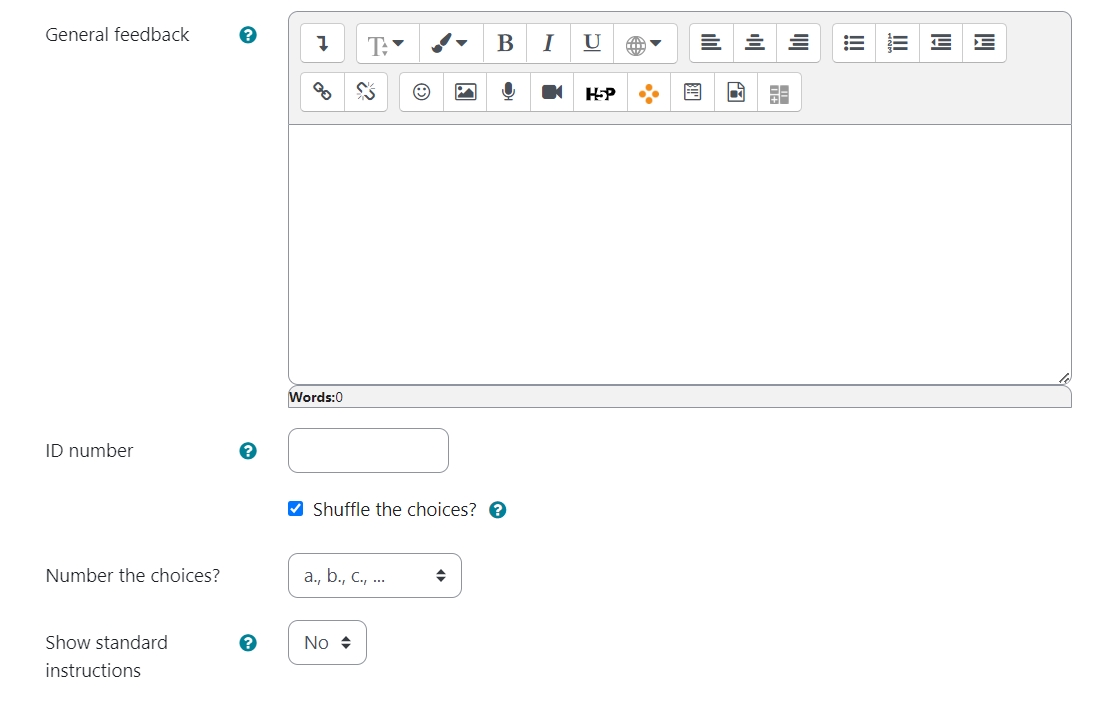
General feedback: General feedback is shown to the student after they have completed the question. Unlike specific feedback, which depends on the question type and what response the student gave, the same general feedback text is shown to all students. You can use the general feedback to give students a fully worked answer and perhaps a link to more information they can use if they do not understand the questions.
ID number: If used, the ID number must be unique within each question category. It provides another way of identifying a question, which is sometimes useful but can usually be left blank.
Shuffle the choices: You can tick/untick this option. It means the order of the choices will be different for different students/attempts.
Number the choices: It changes the number format for each option, such as using the "1, 2, 3..." or "a, b, c..."
Step 6: Answers settings
Set the content, grade and feedback for each choice:
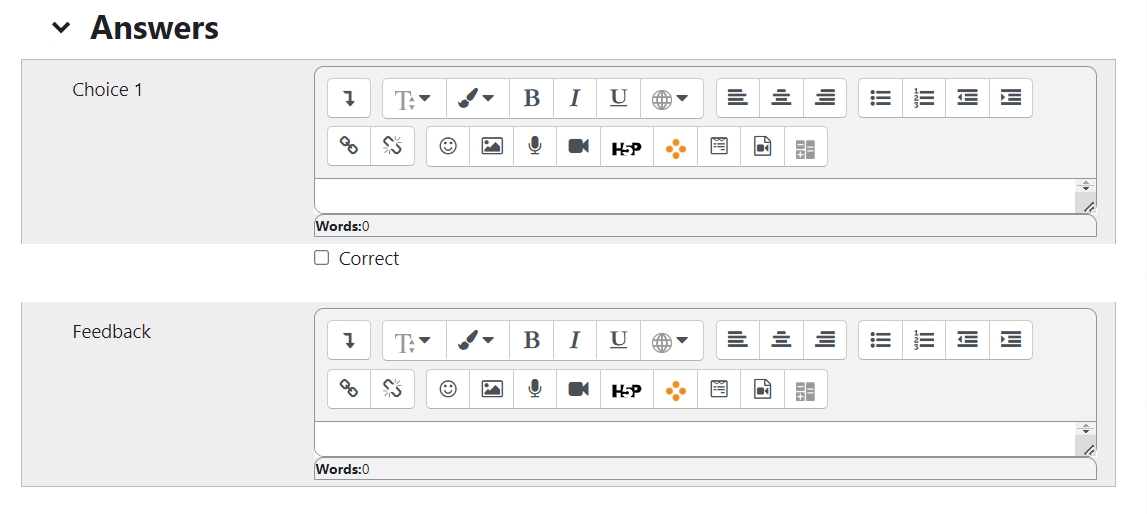
Choice: It's the place where you can create the answer options. Text, images, audio, video, and other media are supported using the text editor.
Correct: Where you can mark the correct answers for the question.
Feedback: The feedback content for each answer can be the explanation of the option about why it is right or wrong. (Optional)
Tips: If the boxes of the answer options are not enough, please click the button "Blanks for 3 more choices" to add more options:

Step 7: Combined feedback (Optional)
Set the combined feedback for the question, which will be shown as the feedback according to students' responses (there's no partial correct response which is different from the multiple choice question type):

Step 8: Multiple tries
When questions are run using the ' Interactive with multiple tries ' or ' Adaptive mode ' behaviour, so that the student will have several tries to get the question right, then this option will be useful to control how much they are penalised and what hint you will receive for each incorrect try :
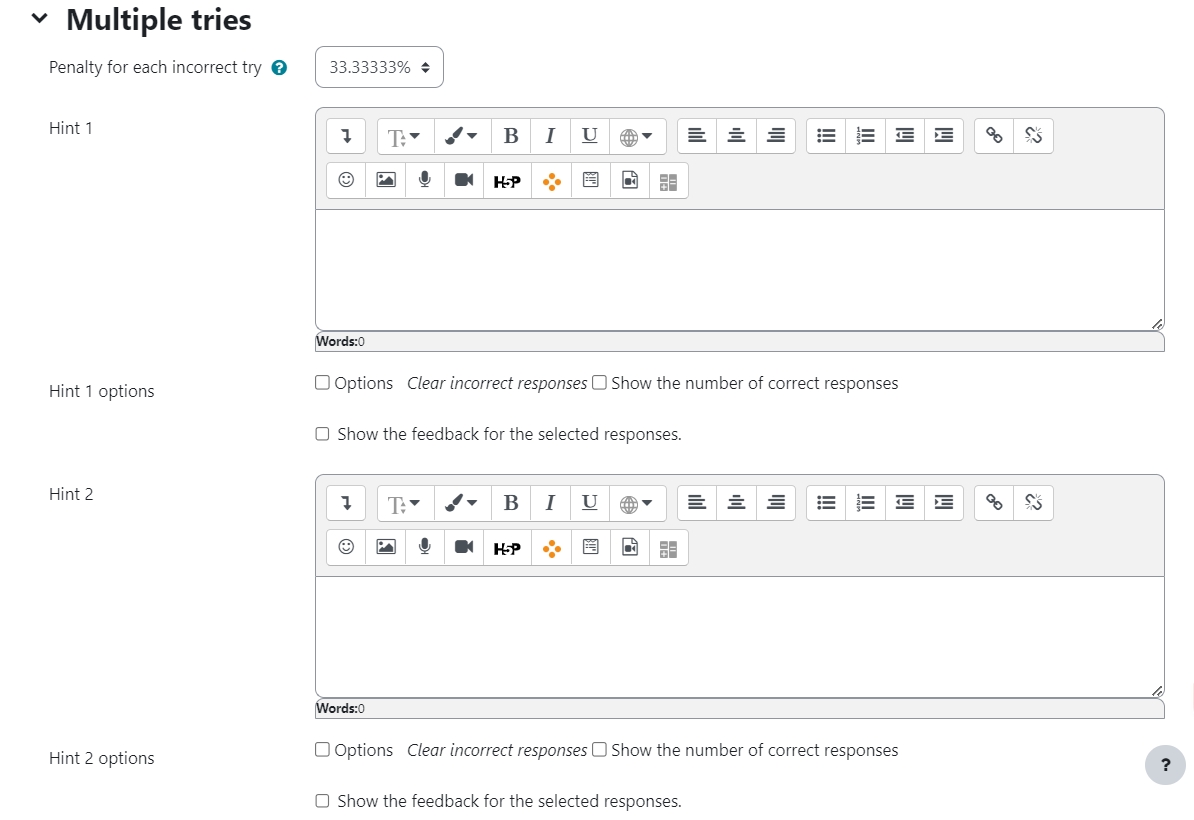 Penalty for each incorrect try:
Penalty for each incorrect try:
The penalty is a proportion of the total question grade, so if the question is worth three marks, and the penalty is 0.3333333, then the student will score 3 if they get the question right first time, 2 if they get it right the second try, and 1 if they get it right on the third try.
For some multi-part questions, this scoring logic is applied separately to each part of the question. The details depend on the question type and can be complicated, but the principle is to give students credit for the knowledge they have demonstrated as fairly as possible.
Hint: It is the message you want the students to see when they are wrong. It will help them to select the right answer in the next attempt. You can create more than one hints according to the attempts the quiz allowed.
Hint options: There are some options for automatic response, such as clear incorrect responses and show the number of correct responses.
Step 9: Tags (Optional)
Using tags, you can easily search for the question by the tag in the question bank.

Step 10: Save changes
Please click the "Save changes and continue editing" or "Save changes" to save your changes.

Tips: You can also preview the questions by clicking:

The following articles you may also be interested:
- Multiple Choice Question
- Calculated multichoice